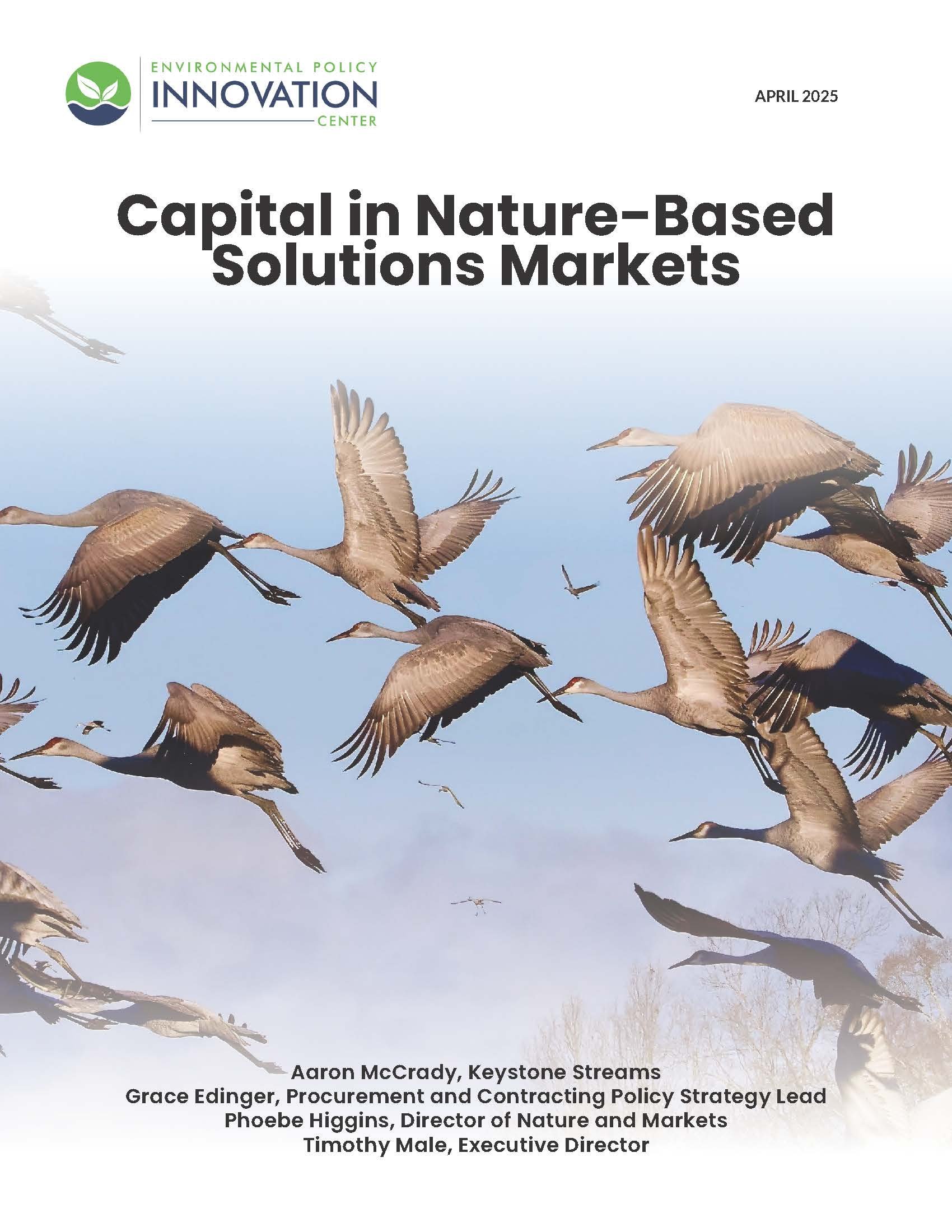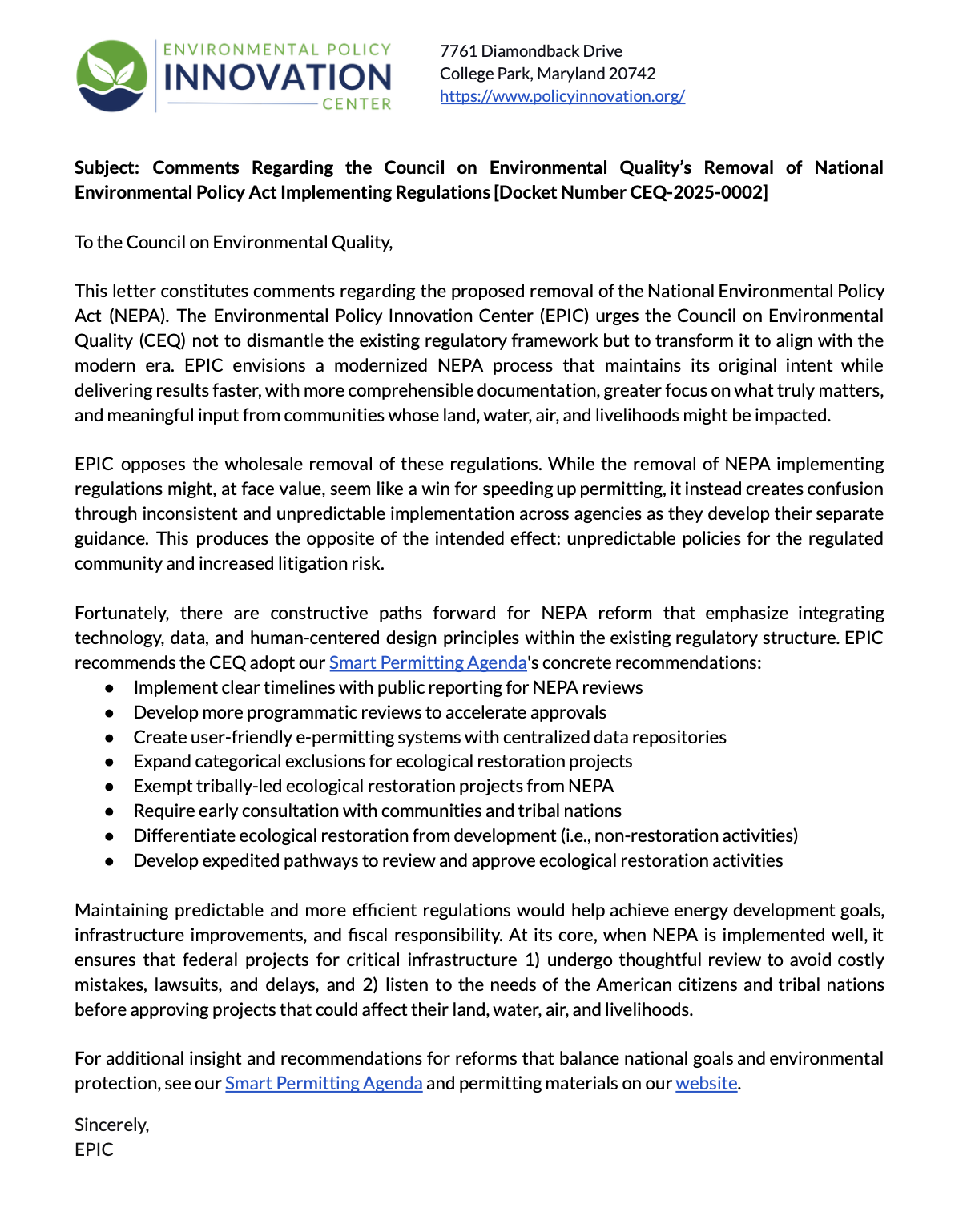
Four Ways Philanthropy Can Accelerate Nature-Based Solutions

The ESA Edit That Could Affect an $800 Million Species Offset Market and Undermine Decades of Tribal Salmon Recovery
Last month, EPIC submitted detailed public comments opposing a proposed federal rule that would weaken the Endangered Species Act by removing habitat destruction from the definition of "harm." If the Rule goes through, it has profound implications for the restoration economy and Tribal communities.

Comment: Opposition to the Proposed Rule to Rescind the Definition of "Harm" Under the Endangered Species Act
Comment: Opposition to the Proposed Rule to Rescind the Definition of "Harm" Under the Endangered Species Act

California’s restoration bottleneck deepens biodiversity debt

First Look at CEQ’s Permitting Technology Action Plan
This blog is a first look at the Council on Environmental Quality’s (CEQ) Permitting Technology Action Plan, which aims to modernize federal permitting processes. The plan includes data standards for interoperability between agencies, service delivery standards for workflow automation and digital documents, and a maturity model for agencies to gauge their progress. Key highlights include implementing data standards, improving document management, and using GitHub for open collaboration. We note the potential for multi-agency procurement and prize competitions and outline potential impacts for agencies, applicants, and vendors. We express cautious optimism due to the plan's technical depth, interoperability focus, and use of existing work but also note concerns about talent gaps and the aggressive initial 90-day implementation timeline.

We need to simplify environmental permits to boost their impact

Green Finance Institute: Revenues for nature announces global effort to unlock private sector finance for nature restoration and conservation

Some Myths and Misunderstandings in Biodiversity Credit Markets
Biodiversity credit markets are new and unfamiliar to most of us, and misconceptions abound. Because carbon credit markets have attracted so much attention - good, bad, and ugly, there is a (mostly) false impression that carbon markets are, or should be the single model for a biodiversity market, and that couldn’t be farther from the truth. I spoke recently as part of an excellent series on biodiversity credits hosted by the Environmental Leadership Training Initiative, and below I’ve adapted my comments from that event to address some of the myths and doubts often posed by both advocates and skeptics. If others come to mind, go ahead and throw them in the comments below.

The Next 55 Earth Days

An Abundance of Nature
EPIC champions a bold approach to environmental restoration, aligning with the Abundance mindset by streamlining wetland restoration, leveraging technology, and using pay-for-success models. By focusing on outcomes over process, EPIC aims to make nature restoration faster, scalable, and impactful—ensuring clean air, water, and ecosystems are abundant and accessible.

Trump’s Permit Tech Memo: Promising Ideas, Implementation TBD

This Tool is Changing How We Protect our Wetlands, Here’s How You Can Help

Federal Policy Shifts Impact Tribal Funding Access and Environmental Restoration

Capital in Nature-Based Solutions Markets
The goal of this project was to determine which financial investments from foundations and other impact investors would be most likely to drive others to invest in NBS. We interviewed fourteen companies and investors focused on deploying capital into nature-based investments.

Comments Regarding the Council on Environmental Quality’s Removal of National Environmental Policy Act Implementing Regulations
EPIC submitted public comments opposing the wholesale removal of NEPA regulations by the Council on Environmental Quality (CEQ), arguing it would create confusion and increase litigation risk. Instead, we proposed modernizing the NEPA process through our Smart Permitting Agenda, which includes implementing clear timelines, developing programmatic reviews, creating user-friendly e-permitting systems, and establishing expedited pathways for ecological restoration. We believe an updated regulatory framework can maintain NEPA's original intent while delivering faster results and ensuring meaningful community input.

EPIC's Smart Permitting Recommendations to the U.S. Senate Committee on Environment and Public Works

Streamlining Habitat Restoration in Washington: A Look at the Habitat Recovery Pilot Program

Smart Permitting Agenda

Pennsylvania’s Utilization of the Abandoned Mine Lands (AML) IIJA Funding


